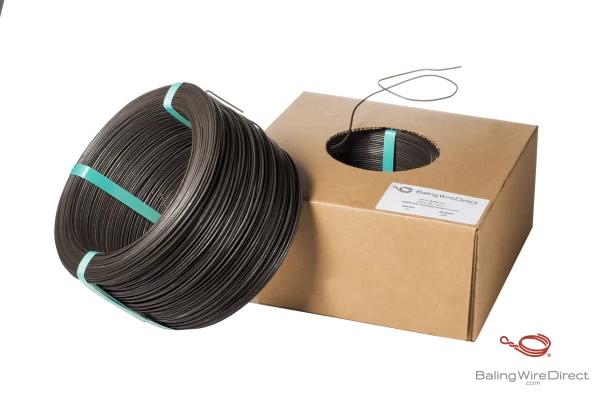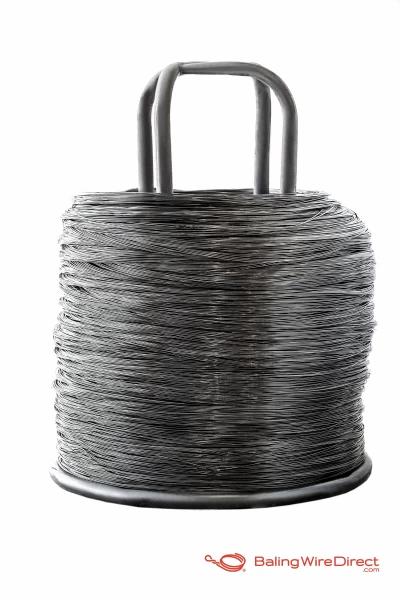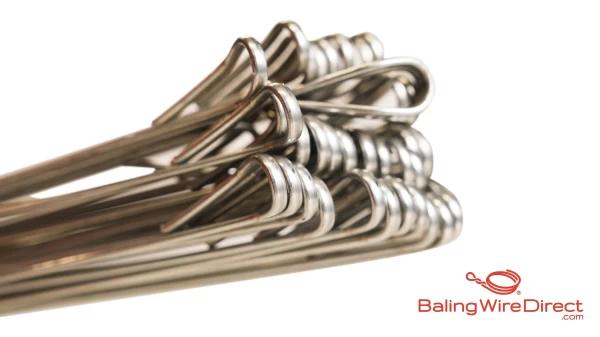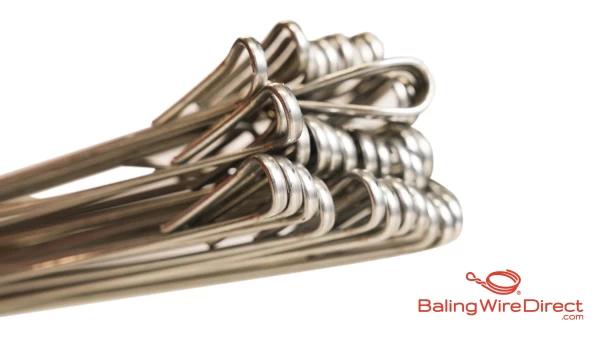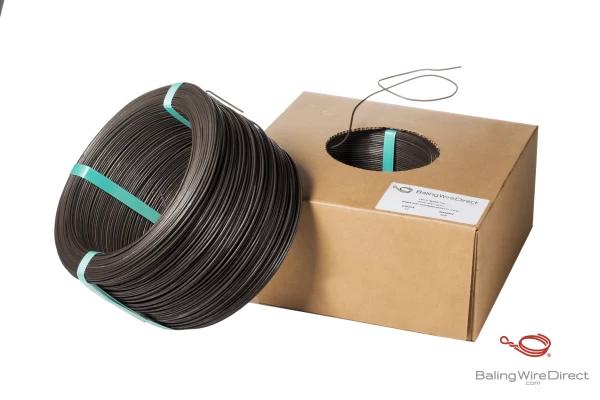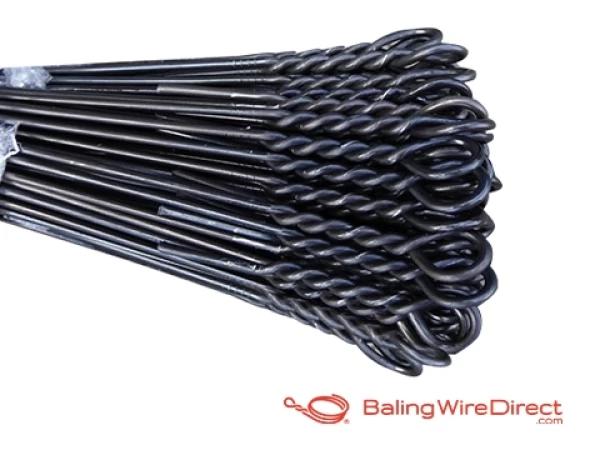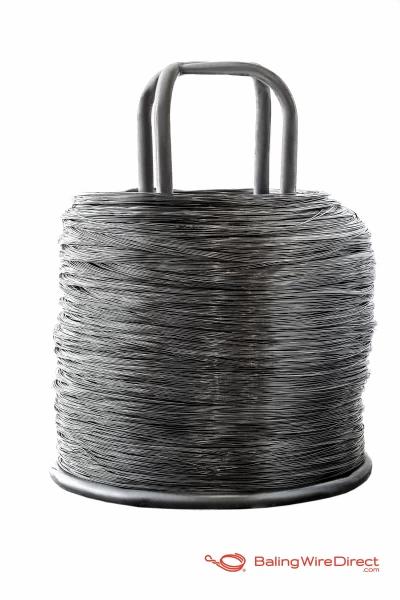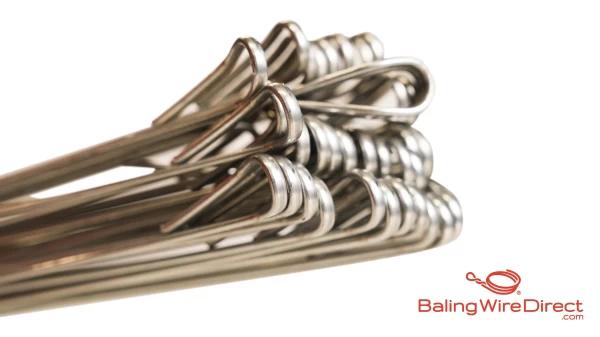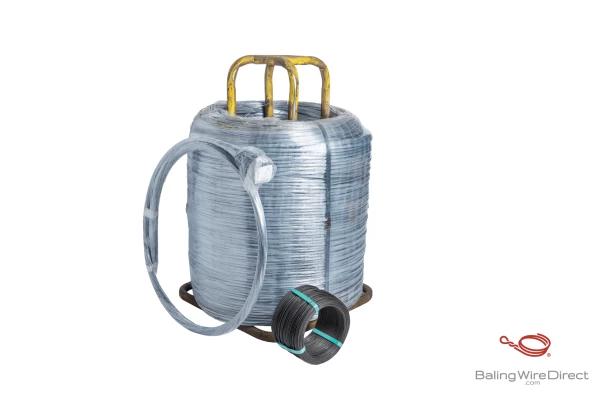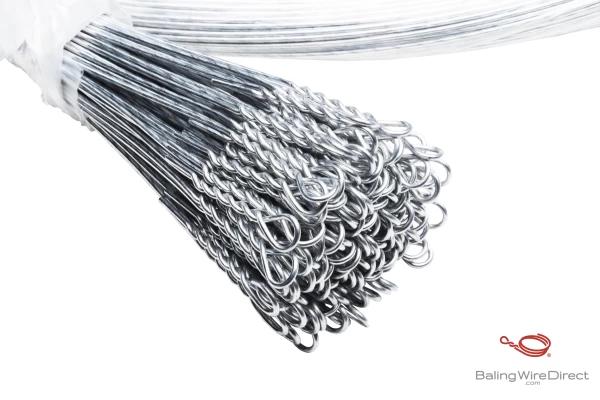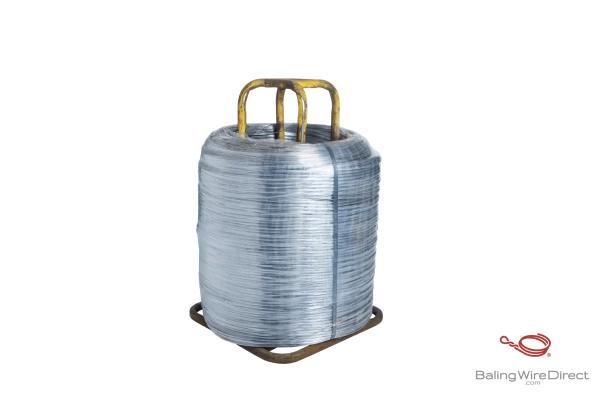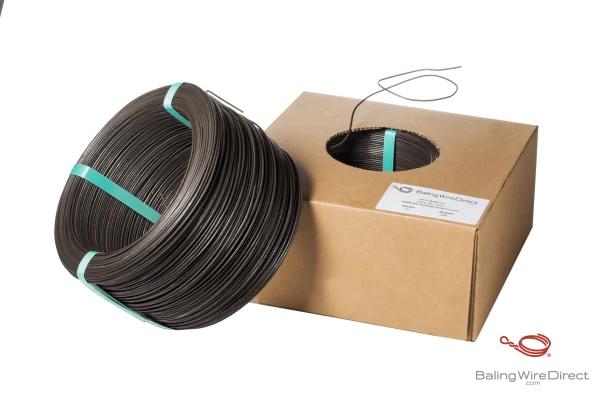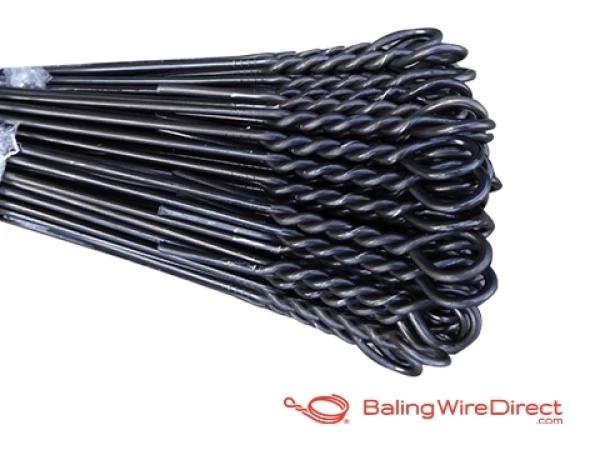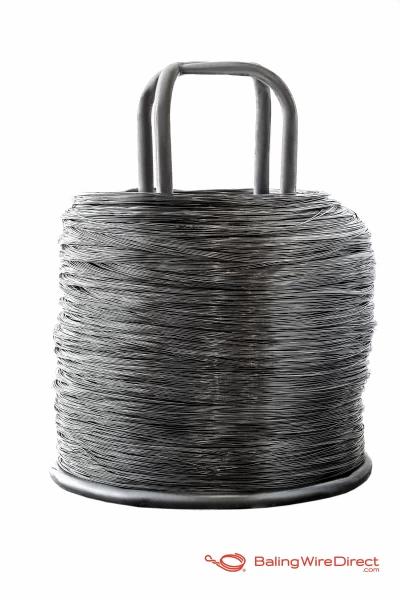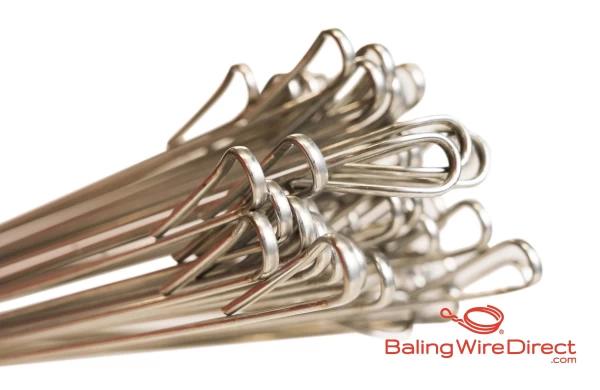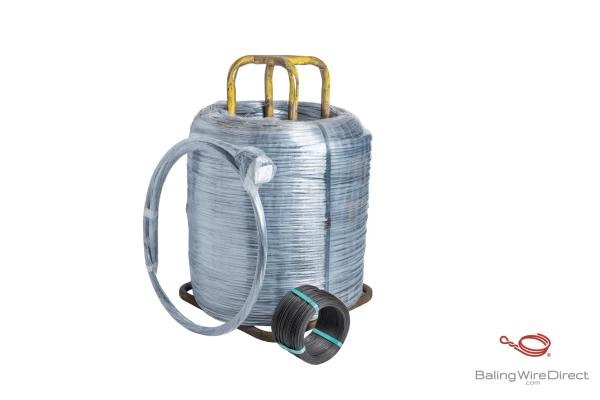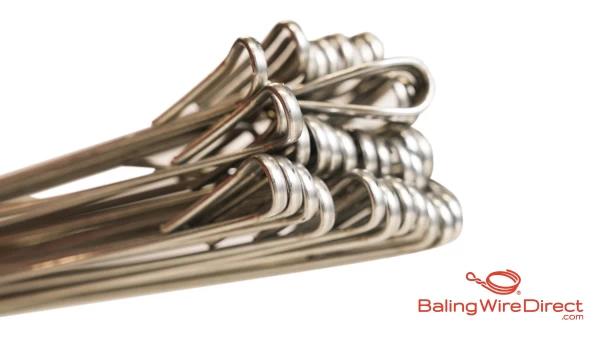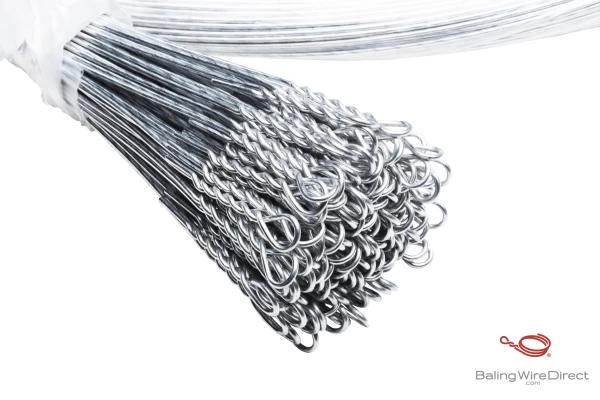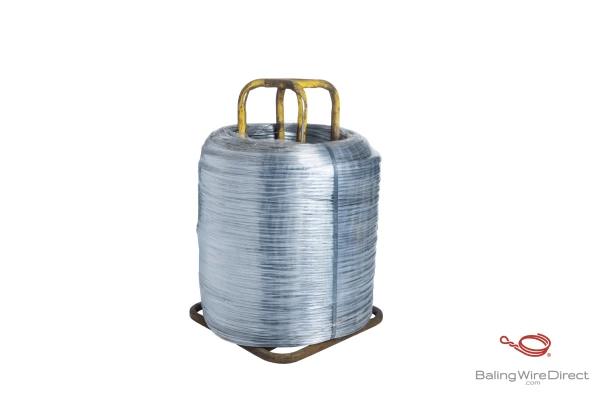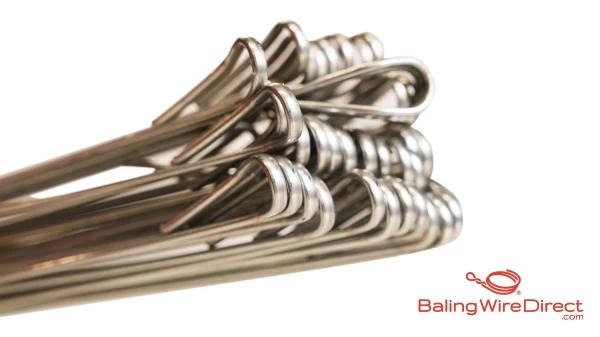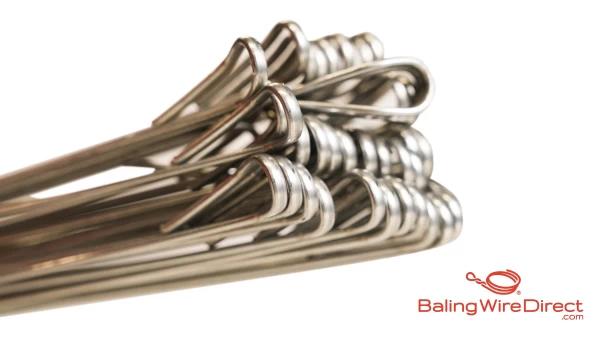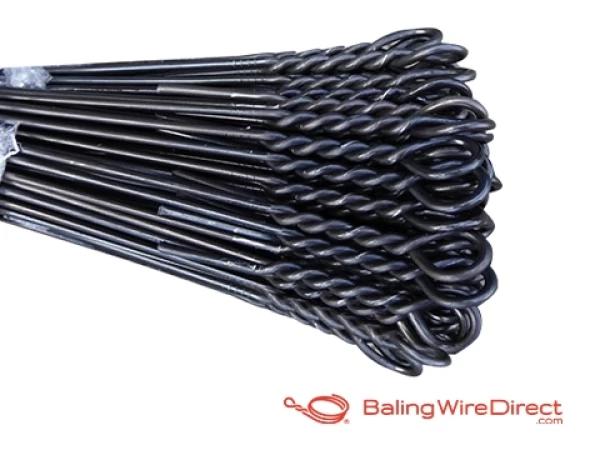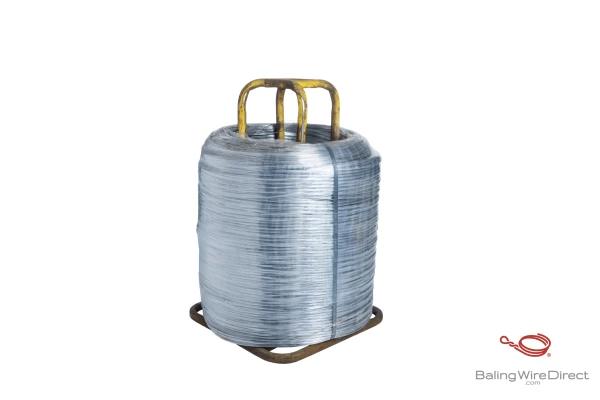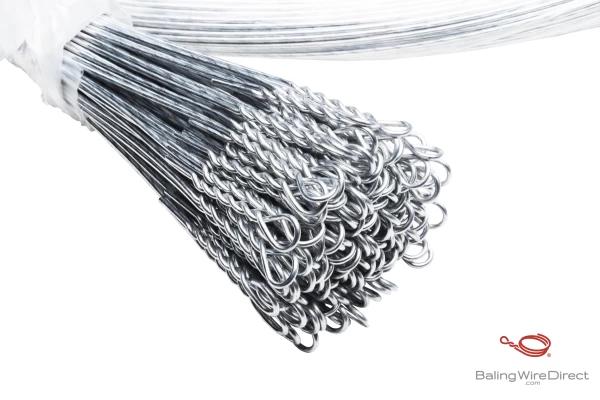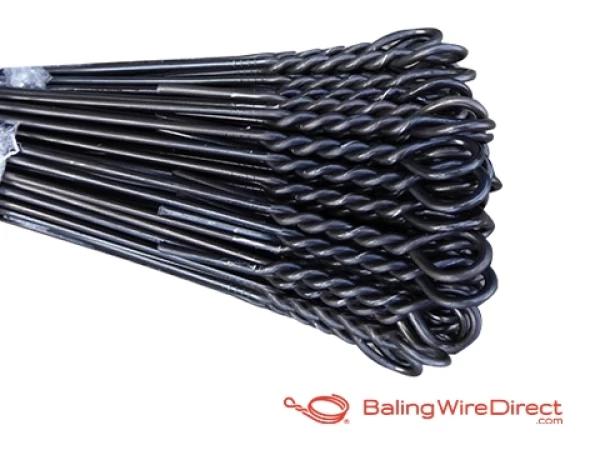Baling wire for plastics recycling
According to the EPA, US households generated 35.7 million tons of plastic waste in 2018. Baling Wire Direct is proud to support plastic recycling efforts with the world’s best baling wire products for baling PET, HDPE, and other recyclable plastics.
High-quality baling wire for recycling plastics
Baling Wire Direct provides high-quality wire products for the recycling industry, including plastics recycling centers. Current forecasting predicts significant growth in the plastic recycling market, and we are ready to meet demand.
To ensure the best products, we tightly control production and distribution. We start by purchasing American-made steel from trusted, family-owned mills. The steel we buy comes with metallurgical traceability documents to ensure quality and performance.
Our manufacturing process begins with a mechanical reverse-bending technique that allows us to descale our steel without the use of harsh chemicals. By removing caustic chemicals from our process, we keep our employees and the planet safe. Our partnerships with top recyclers are strengthened by our clean manufacturing process.
The wire is then drawn through a heavy-duty, bullblock continuous wire machine to reduce the wire diameter to the desired size. The wire is then gradually air-cooled to ensure consistent tensile strength.
After manufacturing, we thoroughly test our products to ensure only high-quality wire products reach our customers.
Using our Autoship™ system, customers can track their shipment in real time via email or SMS. Autoship™ also offers automated reordering and invoicing, so you get what you need when you need it. The entire process takes just 1–3 business days.
Is there a demand for recycled plastics?
There is a significant demand for recycled plastics. The global recycled plastic market is projected to grow substantially in the coming years.
According to a report by Allied Market Research, the global recycled plastic market, valued at $66.7 billion in 2022, is expected to reach $141.9 billion by 2032, with a compound annual growth rate (CAGR) of 7.9%. Similarly, Grand View Research anticipates a CAGR of 4.9% for the global recycled plastics market.
The demand for recycled plastics is driven by several factors such as:
- Increasing plastic consumption in industries such as automotive and electronics
- Increasing customer awareness regarding sustainable plastic waste management
- Environmental concerns
- Tightening regulations regarding packaging waste
- Technical developments within the recycling industry
The largest consumer of recycled plastic is expected to be the Asia-Pacific region. The industries with the highest share of the recycled plastic market are projected to be the agricultural industry and the packaging industry.
What types of plastic are recyclable?
There are seven types of plastics, each identified by a number inside the recycling symbol (resin identification code). Here's a brief overview of each type and its recyclability:
- PET or PETE (polyethylene terephthalate). This type of plastic is commonly found in beverage bottles, perishable food containers, and mouthwash. PET is one of the most easily recycled plastics.
- HDPE (high density polyethylene). HDPE is used in products like milk cartons, shampoo bottles, and laundry detergent containers. It is also widely recyclable.
- PVC (polyvinyl chloride). PVC is used in products like pipes, kids toys, plastic trays, and furniture. PVC products are not typically recyclable due to their composition.
- LDPE (low density polyethylene). LDPE is used in plastic film, grocery bags, and bags that hold newspapers, sliced bread loaves, and fresh produce. LDPE products can sometimes be recycled, but many municipalities do not accept this type of plastic in curbside recycling bins due to difficulties in recycling.
- PP (polypropylene). PP is used in food containers for products like yogurt, sour cream, and margarine. It's also made into straws, rope, carpet, and bottle caps. PP products can sometimes be recycled, but the recycling rate is quite low due to challenges in achieving consistent quality during recycling.
- PS (polystyrene). PS is used to make products like disposable coffee cups, packing peanuts, coolers, to-go food containers, and plastic cutlery. PS products can sometimes be recycled at specialist facilities, but the process is difficult and not widely practiced.
- Other. Any type of plastic that doesn't fit into the first six categories. Products stamped with a 7 are often made out of multiple plastic types or out of other types of plastic. These products can sometimes be recycled, but it's not common due to the complexity of the materials. One common example is ABS (acrylonitrile butadiene styrene).
It's important to note that the recyclability of these plastics can vary depending on local recycling facilities and programs.
The plastic recycling process
Plastic undergoes the following process as part of its circular lifecycle:
- Collection and sorting: plastic waste is collected and sorted at a waste material recovery facility. Here, different types of plastics are separated and prepared for recycling.
- Baling process: the sorted plastic waste is then compressed into compact, dense blocks known as bales.
- Sale to processors: the plastic bales are sold to plastic processors or recycling facilities.
- Arrival at processing destination: upon arrival at the processing destination, the bales are prepared for the recycling process. This may involve re-baling smaller bales into “mill size” bales, which are more suitable for processing.
- Shredding and cleaning: the plastic bales are shredded into smaller pieces. These shreds are then cleaned and filtered to remove any impurities.
- Granulation: The cleaned, shredded plastic is melted and formed into pellets.
- Manufacturing new products: the plastic pellets are then used to manufacture new products. Depending on the type of plastic, these recycled products can range from new plastic bottles and containers to textiles, outdoor furniture, and building materials.
- Distribution and sale: the recycled products are then distributed and sold to consumers, completing the recycling loop.
Not all plastic waste can be recycled due to contamination or the type of plastic. Additionally, the recycling process can vary depending on the specific practices of the recycling facility and the type of plastic being recycled.
What types of wire products are used in baling plastics?
Many different types of baling wire are used in the plastic baling process. While the specific products used are a matter of preference, budget, and baler compatibility, some of the common products used to bale plastics include:
- Black annealed baling wire: this type of wire is black in appearance with a consistent oiled surface. It is often used in single-ram balers, which produce heavier and denser bales.
- Galvanized baling wire: this type of wire undergoes a process of galvanization, which involves coating or bathing the wire in a pool of molten zinc. Galvanized baling wire is ideal for bales that will be stored outside.
Single loop and double loop bale ties: these wire ties are typically used with both vertical and horizontal balers. Single loop bale ties are usually tied by hand. Double loop bale ties are often used in auto tie balers.
Our plastic baling wire sizes
We offer wire suitable for baling plastics in a wide variety of common sizes. Our products are compatible with a range of baling machinery, including vertical and horizontal balers.
Gauge is a standard way of sizing plastic baling wire. Wire gauge is inversely related to diameter, meaning that a smaller wire diameter corresponds to a higher gauge wire.
- Our hi-tensile galvanized baling wirecomes in 11 and 12 gauge.
- Our regular galvanized baling wire comes in 11, 12, 13, and 14 gauge.
- Our black annealed baling wire comes in 9, 10, 11, and 12 gauge.
Our single and double loop bale ties come in 9, 10, 11, 12, 13, and 14 gauge (with half sizes available in select products)
Plastic baling wire categories
We make a wide range of plastic baling products. Order bulk quantities of box wire, stem wire, or bale ties. Click on any category to learn more.
Single loop bale ties
Choose from black annealed or galvanized finish
Double loop bale ties
Choose from bright or galvanized finish.
Annealed wire (box)
Annealed for ductility. 50 and 100 lb boxes.
Annealed wire (stem)
Annealed for ductility. Average 1330 lbs per stem
Galvanized stem wire
Class 3 hot-dip galvanization for long-lasting performance
Hi-ten carrier wire
High tensile strength for demanding applications.
